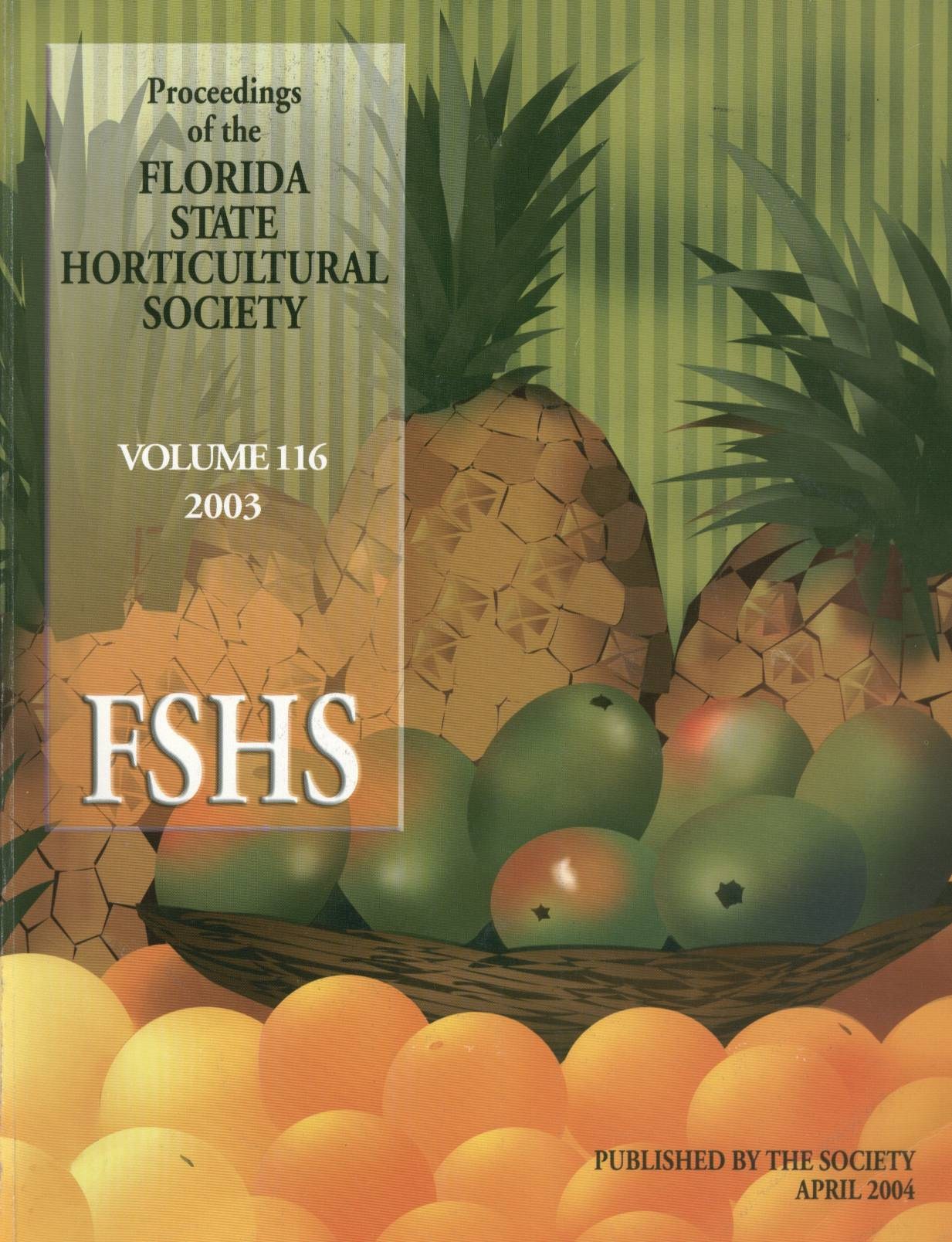Abstract
California red scale (CRS), Aonidiella aurantii (Maskell) was virtually unknown in Florida citrus until an unprecedented, though short-lived outbreak in 1998. That was a so-called "El Nintilde;o" year characterized by an relatively wet winter and dry summer, in contrast to the usual dry winter and wet summer. The predominant variety affected was the tangor Citrus reticulata var. Murcott, most of which had been sprayed with a newly registered acaricide, pyridaben (Nexter® 75WP). Replicated experiments were conducted in a commercial 'Murcott' grove to evaluate the effects of pyridaben under different application regimes (1999) and companion pesticides (2000). Moderate populations of CRS were observed in 1999 that temporarily increased in response to pyridaben compared to the grower standard where abamectin (AgriMek® 0.15 EC) was used. An accompanying decrease in parasitism of CRS was also observed. Nonetheless, pack-out was normal, and no differences in scale incidence among treatments were observed the following spring. Populations of CRS were lower in 2000 with many fewer complaints from growers. A trial comparing pyridaben to another standard acaricide, diflubenzuron (MicroMite ®) did not result in differences in CLM populations, although parasitism of CLM was again somewhat reduced on trees treated with pyridaben. The atypical Mediterranean-like weather pattern in 1998 may have provided favorable conditions for CRS that were further enhanced by pyridaben applications, possibly through secondary effects on parasitoids. CRS populations subsequently became less responsive to pyridaben following establishment of normal weather patterns.

